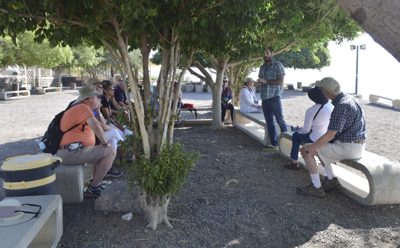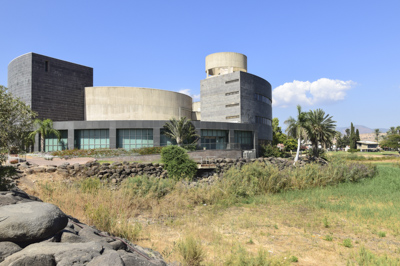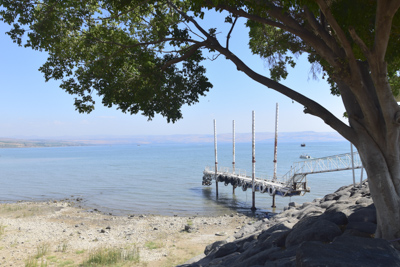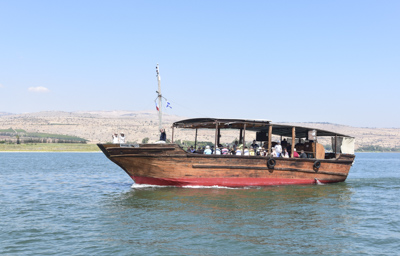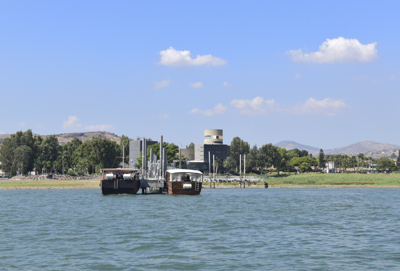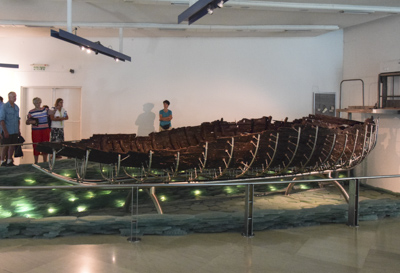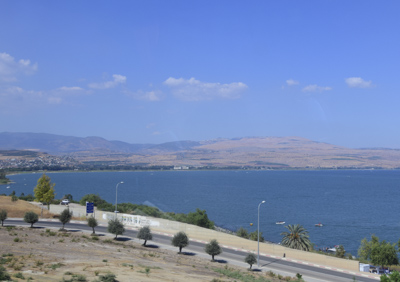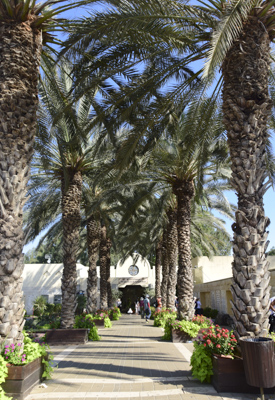Friday October 6, 2017 23 degrees C and sunny
The OAT group left the Haifa Bay Club Hotel in the morning and we drove to Capernaum, an ancient fishing village on the Sea of Galilee. This is the town where Jesus is said to have lived for three years and performed some miracles. A modern Memorial was built in 1990 above the excavated remains of an ancient house and a 5th century Byzantine octagonal church.
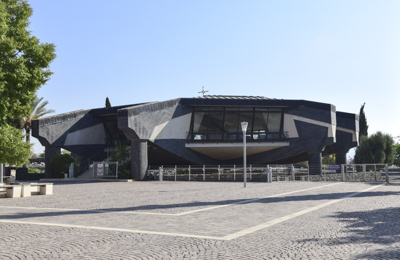
Under the Memorial, I saw the remains of a small octagonal building surrounding another structure. According to legend, this was the house of the apostle Simon Peter.

Our group gathered in the shade of some trees and Alon Neeman, our assistant guide, told us the stories of the site and explained the excavations.
The most astonishing area in Capernaum were the ruins of a 4th century synagogue, which was built on the foundations of a 1st century synagogue. The ruins include remarkable foundations, colonnades, seats, and walls covered with painted plaster and fine stucco work.
A plaque read: “The late fourth century AD ‘White Synagogue’ built upon the remains of the ‘Synagogue of Jesus.'” The historical ruins of this building, with inscriptions in Greek and Aramaic, indicate that it is among the oldest synagogues in the world.
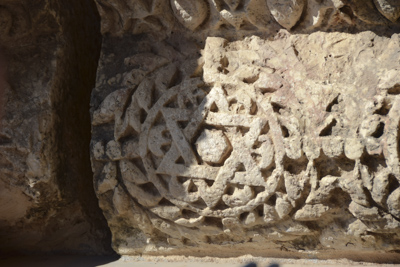
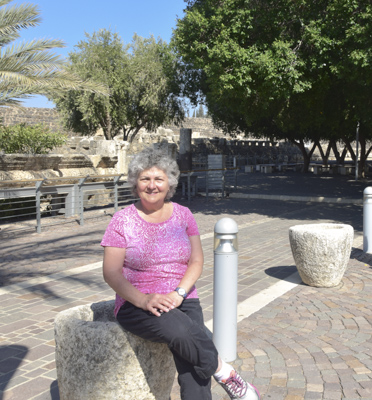
Then it was a short drive to the Roman Catholic chapel on the Mount of the Beatitudes. This is the hill where Jesus is believed to have delivered the Sermon on the Mount. The exact location is not known, and other nearby hills have been suggested, however this site has been commemorated for more than 1600 years.

The small chapel, which was built in an octagonal shape in 1938, was overflowing with foreign visitors. The site is run by the Franciscan Sisters who operate a guesthouse on the property for Catholic pilgrims. As the bus drove down from the chapel, I noticed that the hillside slopes down toward the Sea of Galilee and forms a natural amphitheater.
The bus drove to the shore and to the modern Yigal Allon Centre. We walked through the center, down the dock, and boarded a large wooden boat to sail out on the Sea of Galilee.
The “Sea of Galilee” is actually a freshwater lake, also known in modern Hebrew as Lake Kinneret. It is 13 miles long, 8 miles wide, and at its maximum depth is 141 feet deep. The lake supplies about 10% of Israel’s drinking water, but unfortunately due to increased demand, the level of the water has decreased to dangerously low levels.
Lake Kinneret is located in northeastern Israel and is about 700 feet below sea level, making it the lowest freshwater lake on Earth. The lake is fed partly by underground springs although its main source is the Jordan River.
Riding on the boat was so much fun!
The crew entertained us by raising an American flag, playing a variety of loud music, giving a fishing lesson, and teaching the group how to dance the Hora on deck.
The boat docked and we went into the Yigal Allon Center to see the 2000 year old boat.
The unique 1st century boat was found buried in thick silt of the Sea of Galilee during a drought in 1986 when the water level was exceptionally low. It was painstakingly removed from the sediment and preserved in the Yigal Allon Center.
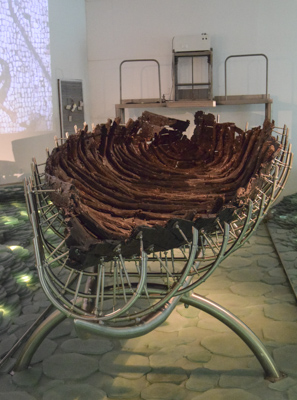
It is believed to be the type of boats used for fishing and transportation on the lake approximately 2000 years ago.
Afterwards, we drove through the city of Tiberias on our way to lunch at a shoreside restaurant called Galei Gil. Tiberias, named in honor of the Roman Emperor Tiberius, is located on the western shore of the Sea of Galilee.
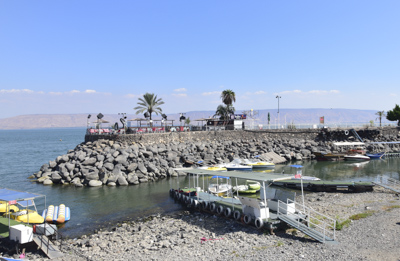
There was a nice boardwalk along the shore which was crowded with families. We ate a local dish called St. Peter’s Fish at the Galei Gil Restaurant. This was a whole grilled tilapia served with French fries.
After lunch, we boarded the bus, drove around the northern end of the Sea of Galilee and stopped at the Yardenit Baptismal Site. This site is located along the Jordan River near Kibbutz Kvutzat Kinneret which owns and manages the site.
It was a lovely location and several religious groups were lined up to immerse themselves in the river while other pilgrims were putting their feet in the cool waters. The Yardenit Baptismal Site currently averages 400,000 visitors a year.

Another site in Jordan called Al-Maghtas has the earliest religious structures connected with baptisms or religious baths. UNESCO declared Al-Maghtas (the Hebrew name is Qasr el Yahud) along with Jabal Mar-Elias, (Elijah’s Hill) on the east bank of the Jordan River a world heritage site in 2015.
We continued along the northern side of the Sea of Galilee and drove up the side of the mountain range known as the Golan Heights. Our destination was the Kibbutz Kfar Haruv seen at the top of the hill in my photo taken from the bus. It’s the little white building in the center near the top:
Here are views of the Sea of Galilee from the top of the Golan Heights:
We stopped at Kibbutz Kfar Haruv to spend the night. The Kibbutz owns and operates the Peace Vista Country Lodge and Suites and rents rustic cabins for family vacations.
We had a pleasant evening and had dinner in the cafeteria where the Kibbutzniks eat. The westward view across the Sea of Galilee to the city of Tiberias was fantastic.
